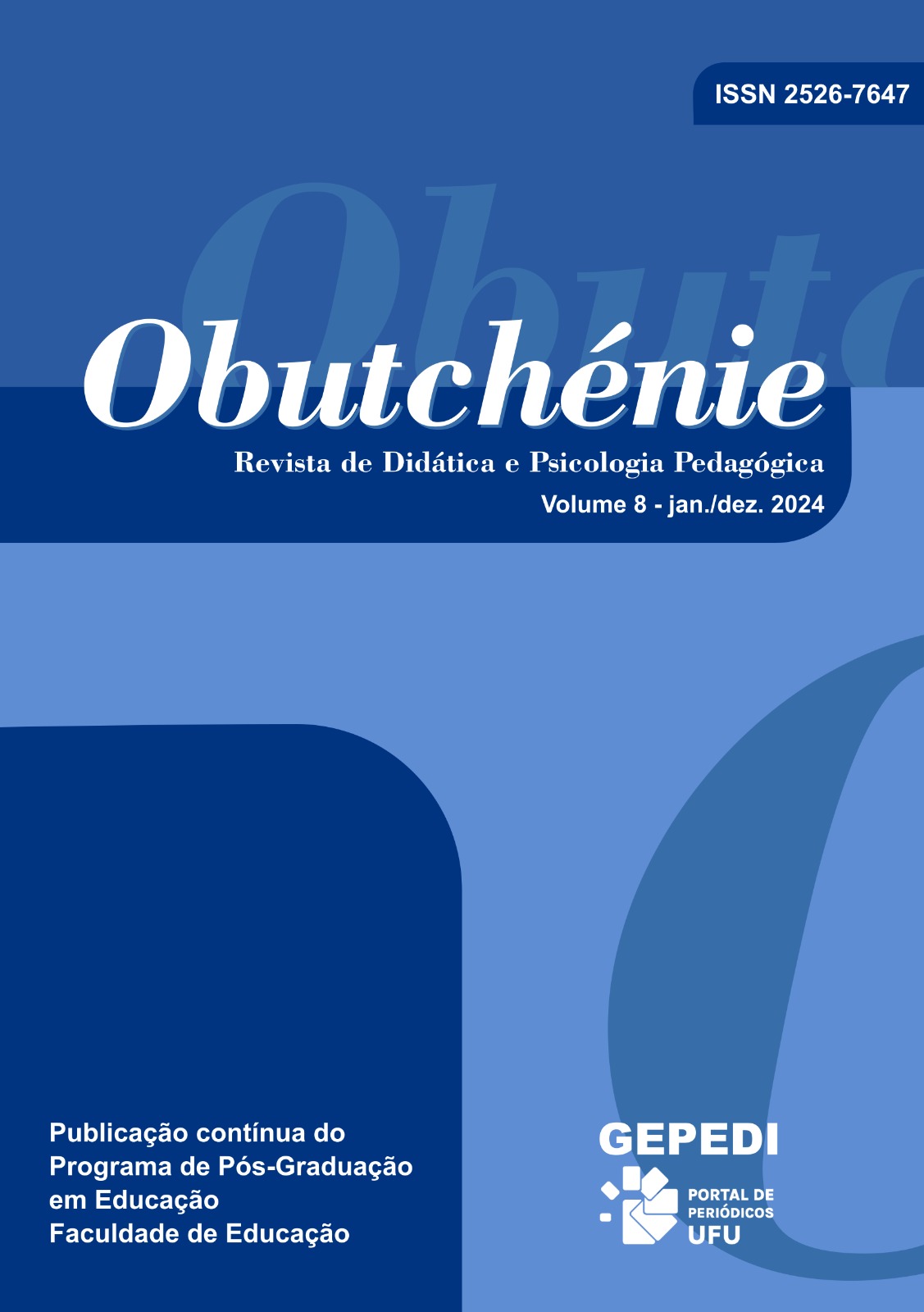Logical-historical movement of the polyhedron concept: the process of elaboration and development of a didactic sequence in Middle School
Main Article Content
Abstract
This article approaches the process of teaching the concept of polyhedron the final years of elementary school. In the materials available for teaching, the concept appears in situations that are enclosed within Geometry itself and can be solved mechanically. In this context, we used Didactic Engineering as a methodology to design and analyze the process of creating and developing a didactic sequence that considers the historical evolution of the concept, through its logical-historical movement, as well as the cognitive processes involved in learning geometric concepts. The aim is to offer mathematics teaching that promotes a broad understanding of this science. The logical-historical movement of the polyhedron concept helped us understand mathematics as a science developed by human beings and in constant transformation. The use of concrete materials allowed the manipulation and visualization of three-dimensional objects and facilitated the assimilation of the concept. The organization proposed by the methodology adopted was effective in achieving the stipulated objectives, but by segmenting the planning and experimentation phases of the activities, this approach leaves little room for unpredictability.
Downloads
Article Details

This work is licensed under a Creative Commons Attribution-NonCommercial-NoDerivatives 4.0 International License.
References
ALMOULOUD, S. Ag. Registros de Representação Semiótica e Compreensão de Conceitos Geométricos. In: Machado, Silvia Dias Alcântara (org.). Aprendizagem em Matemática: registros de representação semiótica – Campinas, São Paulo. Papirus, p. 125-148. 2010.
ALMOULOUD, S. A. COUTINHO, C. Q. S. Engenharia Didática: características e seus usos em trabalhos apresentados no GT-19/ANPEd. REVEMAT – Revista Eletrônica de Educação Matemática. Vol. 3, 8. p. 62 – 77. UFSC, 2008. DOI: https://doi.org/10.5007/1981-1322.2008v3n1p62.
ASSIS, C. BARBOSA, R. FEITOSA, S. MIRANDA, T. OBMEP. Banco de questões 2015. Rio de Janeiro: IMPA, 2015.
ATIYAH, M. Mathematics on the 20th century. In: Bulletin of the London Mathematical Society, v. 34. Jan. 2002. DOI: https://doi.org/10.1112/S0024609301008566.
EUCLIDES. Os Elementos. Translated to Portuguese by Irineu Bicudo. São Paulo: Editora UNESP, 2009.
EVES, H. Introdução à História da Matemática. Translated to Portuguese by Hygino H. Domingues. Campinas: Editora da UNICAMP, 2004.
LIMA, L. C. Da mecânica do pensamento ao pensamento emancipado da mecânica. In: Programa Integrar. Caderno do Professor: trabalho e tecnologia. CUT/SP, 1998, p. 95-103.
LIMA, W. F. R. Movimento lógico-histórico do conceito de poliedro. In: Anais do Encontro Mineiro de Educação Matemática: desafios e possibilidades da Educação Matemática durante e pós-pandemia. Anais... Pouso Alegre (MG) IFSULDEMINAS, 2021. DOI: https://doi.org/10.29327/147222.9-13.
LIMA, W. F. R. Uma sequência didática para o ensino de poliedros explorando o movimento lógico-histórico do conceito. 2017. Dissertation (Master’s in Mathematics) – Universidade Federal de São Carlos, São Carlos, 2017.
LLOYD, D. R. How old are the Platonic Solids? BSHM Bulletin: Journal of the British Society for the History of Mathematics, 27(3), p. 131-140, London: British Society for the History of Mathematics, 2012. DOI: https://doi.org/10.1080/17498430.2012.670845.
OLIVEIRA, Marta Kohl de. Vygotsky: aprendizado e desenvolvimento: um processo sócio-histórico. São Paulo: Scipione, 1997.
PLATÃO. Timeu-Crítias. Translated to Portuguese by Rodolfo Lopes. Coimbra: Centro de Estudos Clássicos e Humanísticos da Universidade de Coimbra, 2011.
POINCARÉ, H. Papers in Topology: Analysis Situs and Its Five Supplements. Translated by John Stillwell. Providence, RI: American National Society, 2010.
POMMER, W. M. Equações diofantinas lineares: um desafio motivador para alunos do ensino médio. 2008. 153 f. Dissertation (Master’s in Education) – Pontifícia Universidade Católica de São Paulo, São Paulo, 2008.
RICHESON, D. S. Euler’s Gem. The Polyhedron Formula and the Birth of Topology. Princeton: Princeton University Press, 2008.
SAITO, F. DIAS, M. S. Interface entre História da Matemática e Ensino: uma atividade desenvolvida com base num documento do século XVI. Ciência & Educação, v. 19, n. 1, p. 89-111. Bauru: UNESP, 2013. DOI: https://doi.org/10.1590/S1516-73132013000100007.
SANDIFER, E. How Euler did it. Providence, Rhode Island: American Mathematical Society, 2007. DOI: http://dx.doi.org/10.1090/spec/052.
SOUSA, M. do C. de. O movimento lógico-histórico enquanto perspectiva didática para o ensino de matemática. Obutchénie. Revista De Didática E Psicologia Pedagógica, 1(4), 40–68, 2018. DOI: https://doi.org/10.14393/OBv2n1a2018-3.

